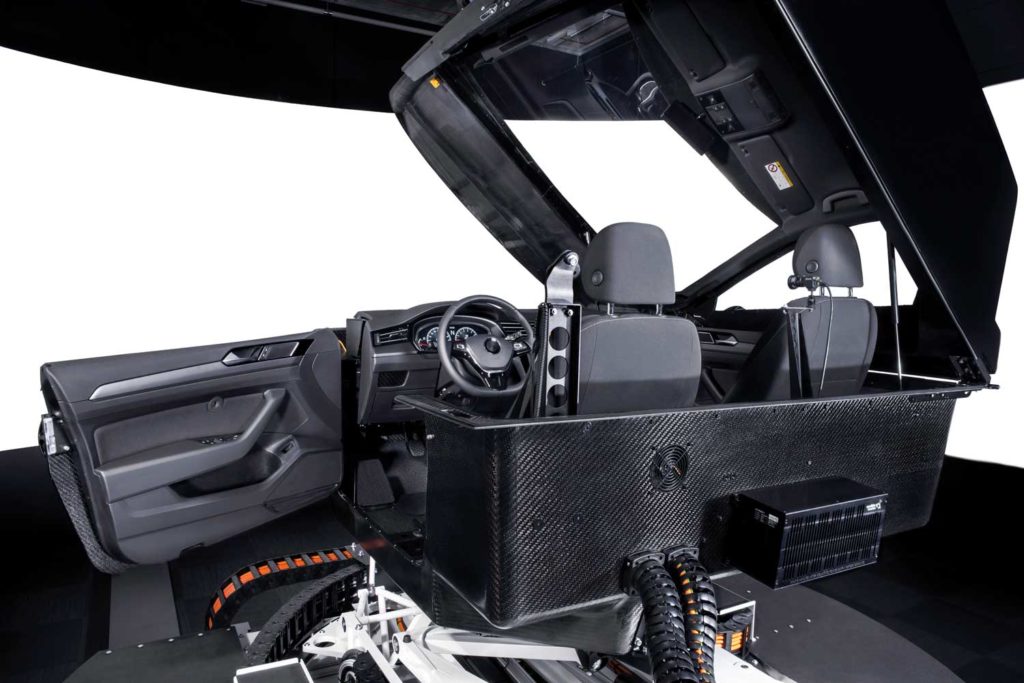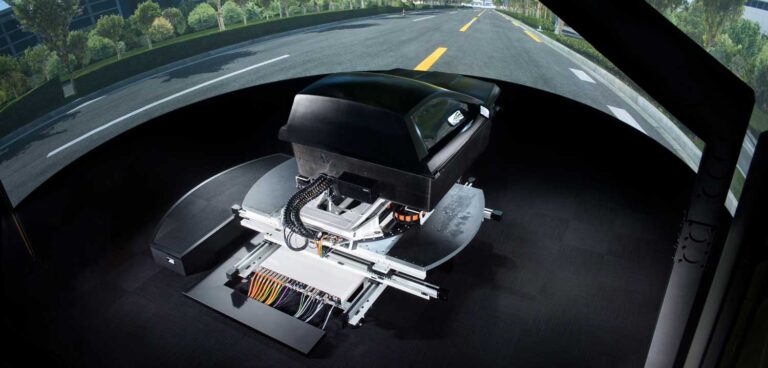New advanced driver assistance systems (ADAS) and autonomous technologies introduced in vehicles are revolutionizing the way we drive, but can also result in an overwhelming number of icons, bleeps and buzzes. A new multimillion-dollar driving simulator has been created to help OEMs better understand how humans will cope and respond to these new systems.
With driver assistance systems expected to grow to a US$70bn market by 2024, Ansible Motion’s Delta driver-in-the-loop (DIL) simulator has been designed to offer a repeatable laboratory environment to test and validate new ADAS in a short amount of time, to see how drivers react to them.
“Car makers are introducing more driver assistance technologies, but the level and method of intervention differs by car brand,” says Kia Cammaerts, founder and director of Ansible Motion. “If a car does something unexpected, we are able to test what the driver and occupant reactions will be in our simulator laboratory, well in advance of cutting any metal. Our latest simulator enables car manufacturers to design better and safer vehicles and assess many proposed technologies early in the design cycle.”
Ansible Motion’s simulator lab in Hethel, Norfolk, has cabin environments that reflect OEM styling and human interaction features and new software connectivity that enables deeper environment and sensor simulation, coupled with Ansible Motion’s proprietary motion, vision and audio environment that ‘tricks’ drivers and occupants into believing they are experiencing a real vehicle and its ADAS or autonomous technologies.
Other system validation examples include lane departure warnings and assistance, intelligent speed adaption and driver monitoring for drowsiness and distraction.
“We aim to deliver compelling experiences to connect real people to the world of simulation. This method of providing virtual ride and drive experiences has proven to be highly effective for vehicle constructors as they trial their new concepts,” claims Cammaerts.



